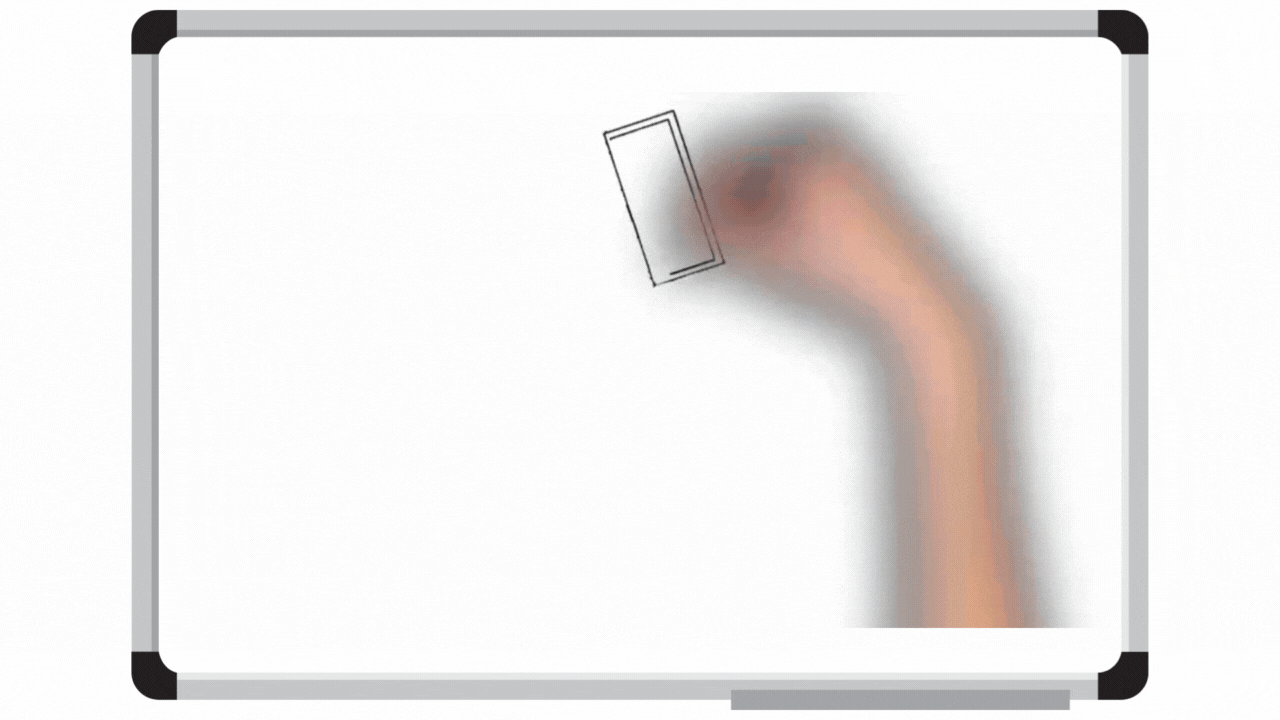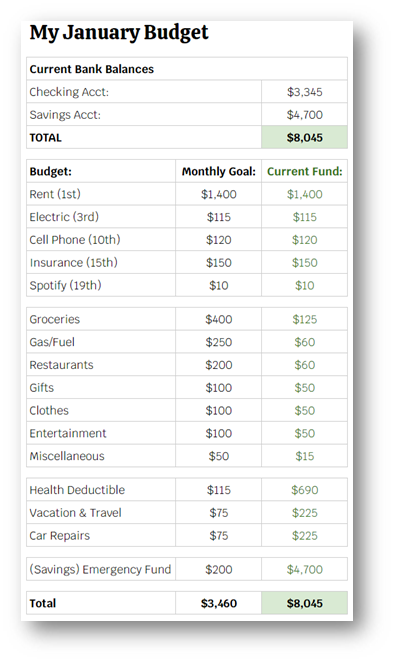How to Start Budgeting In a Way That Actually Works (For Beginners)
Budgeting can change your life. But the biggest thing that holds people back is knowing where to start, how to do it, and how to avoid failing at it… again. In this post, I'll revolutionize how you approach budgeting and teach you the 3 steps you can follow to get started.
The New Way to Think About Budgeting
If you’re like most people, you’re used to budgeting by trying to estimate how much money you’ll earn next month and setting limits on how much you’ll spend. This approach to budgeting fails more than it helps. Usually, it’s just a giant guilt-trip.
When I see people use phrases such as “I’m trying to do this on a budget” or “I’m looking for a budget alternative”, it tells me that they see budgeting as synonymous with restriction, less and lack, or cheap. This is why so many people believe that budgeting is just for broke people.
Getting “on a budget” doesn’t mean that you’re restricting your spending.
Getting “on a budget” simply means that you’re committing to intentionally plan for how you’re going to use your money, with the goal of giving yourself the freedom and permission to use it how you need and want to.
Your budget can tell you that you only have $50 left in your Restaurant fund for the month, so maybe you need to get creative with cooking at home.
But, it can also tell you that you have an extra $70 in a Clothes fund, so you can reallocate it to your Restaurant fund for more nights out with your significant other. If that’s how you choose to prioritize your money.
Your budget isn’t about suffocating yourself with some arbitrary (and often unrealistic) spending limit just for the sake of not spending money. It’s about intentionally building your wealth and accumulating the funds for the priorities you have.
I use my budget to make sure I can pay the bills and that I’m on pace for important savings goals, yes.
But I also use my budget to justify and safely fund my unhealthy obsession with buying too many books. I use it to save up enough money to upgrade my office chair because I’m tired of the physical pain caused by past “budget options.” I use it to justify going wayyyy overboard on Christmas gifts for my loved ones because gift-giving is my love language and it makes me happy.
How is it that I’m able to do this? It’s because I know exactly what I NEED for the important bills, and I’ve intentionally set aside that money. So when I have “extra” money to set aside for the things I WANT, I rest easy knowing that everything else is funded. If I spend more in one area, I just move the funds from another so that, in the end, everything was covered and I didn’t overspend in total (which is all that actually matters).
How This Budgeting Method Works
The method that I follow to budget in this way is extremely simple. It’s a two-step process of determining:
How much money do I have in the bank?
What am I going to do with each of those dollars?
That’s it! I’m not projecting what I think I might earn and basing a plan off of wishful math. I’m focusing on allocating out what I already have.
When new money comes in next pay day, I allocate that out to the plan and update my fund balances. As money comes out, I reduce my balances. If I want to reallocate my priorities as things change throughout the month, I just do it. No guilt necessary.
In the end, the total amount of money in my budget’s “funds” equals my current bank balance.
And yes, this applies to both personal and business finances!
Budget Tools & Options
So how can you actually maintain a system like this? Honestly, this can be as simple as a piece of paper, if you really wanted.
Personally, though, for a simple and manual system, I’d opt for a spreadsheet to make the math easier.
All you need to do is take note of your current bank balances, then make a list of your expenses and goals you want to build into your budget.
This image shows a simple example of how I would do this myself - no formulas necessary!
But it can be helpful to have the spreadsheet total up your bank balances (if there are multiple accounts) and your budget totals, just to save you some time.
Tip to Auto-Total: Type =SUM( where you want the total to calculate.
Then, with your cursor still active in the formula, click and drag the selection of cells you want to total.
Close the parentheses with a “ ) “ and hit Enter!
Example Result: =SUM(B7:B25)
When you revisit your budget (ideally at least once a week, but more is better when you’re just starting!), simply update your bank balances and current funds as needed.
You’ll do some manual math to total up which funds have gone down (looking at your online bank account to see what transactions have occurred) and then adding whatever new funds you have to your categories. But, in the end, you’ll know you’re done if your fund balances and bank balances match up again!
Notice the orange cells have updated with new balances based on the activity that occurred since my last budget update.
The more often you do this throughout the week, the easier it will be. 😉
All of this said, I do have to give a shout out to my preferred budgeting tool, YNAB! (Which stands for You Need a Budget.)
If a manual spreadsheet isn’t for you and you’d like something a little more robust, you’ll want to check out this incredible tool. Click here to learn more about it!
Use YNAB to budget for business AND personal finances using all the game-changing principles I’ve shared with you in this post! Learn more at morewithmoney.com/ynab
Where to Start
When I’m overwhelmed with my finances (which does still happen in certain seasons!), I find that making a list of my priorities and need-to-knows makes a tremendous difference. From there, it’s about slowly building out a plan and system to make the desired change!
If you’re wanting to be better with your finances but don’t know where to start, follow these steps in order at a pace that feels good to you. Before you know it, you’ll be surprised to find that you have a new budgeting hobby. 🤓
This is through the lens of a personal budget, but you can definitely still adapt this for business, too! That said, I have a whole post dedicated to business budgeting here. 🙂
Using your online banking or recent bank statement to help you, make a list of your monthly bills and fixed financial obligations, along with your best estimate of how much you need for each. These are the expenses you already have coming out regularly that you have little control over and need to ensure you have the funds available ASAP. Be sure to note the total amount! (This list should include bills, subscriptions, and standard costs of living such as groceries or gas.)
Compare the total monthly expenses with your current bank balance. Do you have enough to cover everything right now? If yes, note the difference that you have available after subtracting your anticipated monthly expenses. If you don’t have enough to cover the month, arrange your list into a priority order and allocate the funds you do have in that order until you run out. At this point, your focus is to be mindful of your spending while you work to earn more money. When your next paycheck comes in, allocate the funds to your next bills until you can safely say that you can pay your important monthly expenses!
When you’re able to pay your bills month-to-month, then you start building up your cash independence with sinking funds. This is where you’ll start to feel the true power of your budget! **Click here to read more about the Sinking Funds strategy for leveling up your budget!** ✨
Whether you choose to do all of this on paper, in a spreadsheet, or in YNAB is completely up to you. Take a moment to evaluate what you know about yourself and choose the option that you feel is most attainable and sustainable for you in this current season.
For me, intuitive software is the best way for me to create a new system in my life, so I would start with YNAB. For others, software can be overwhelming, so sticking with a more analog and simplistic system is the best way to ease into it. Do what works for you!
Just remember to take this journey one step at a time. Financial management is a lifelong journey. Change doesn’t happen overnight. Be patient with yourself, and learn to enjoy the journey along the way.
Are you ready to take your financial journey to the next level? Then you may be ready to check out the More With Money Academy!
This ever-growing collection of online courses and trainings are specially designed to support entrepreneurs like you on your path to financial wellness. The Academy contains carefully designed courses that are easy to understand and implement so that you can be empowered with the practical concepts, streamlined systems, and powerful mindset to transform your business and personal finances.
Click here to explore what the More With Money Academy has to offer!
Pin for later
I'd love to continue the conversation in the comments! Feel free to share your thoughts.
Until next time!








